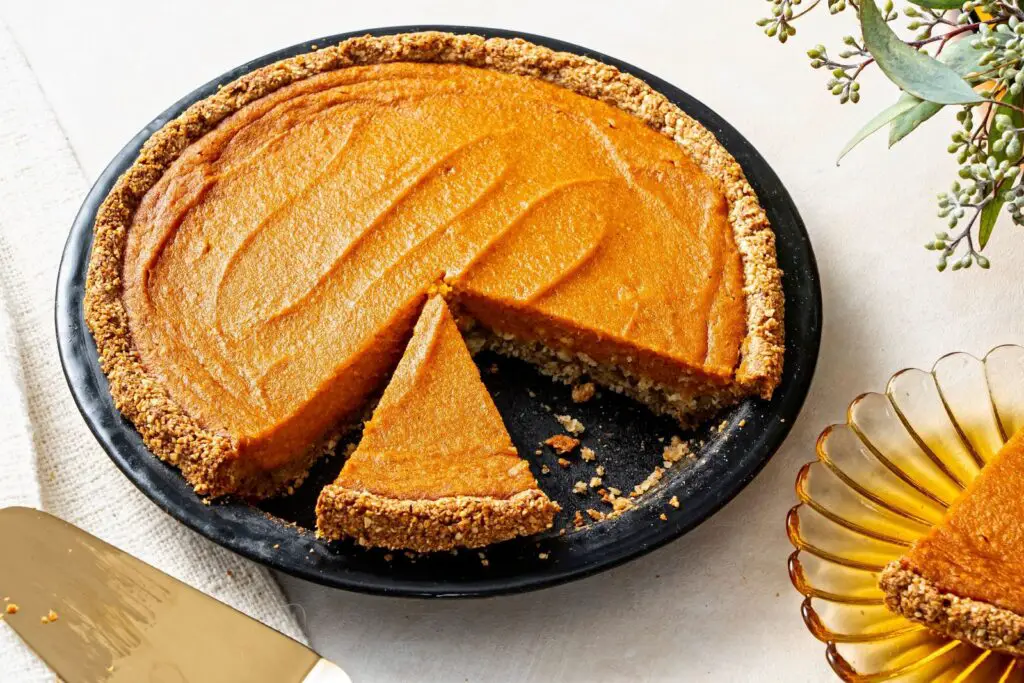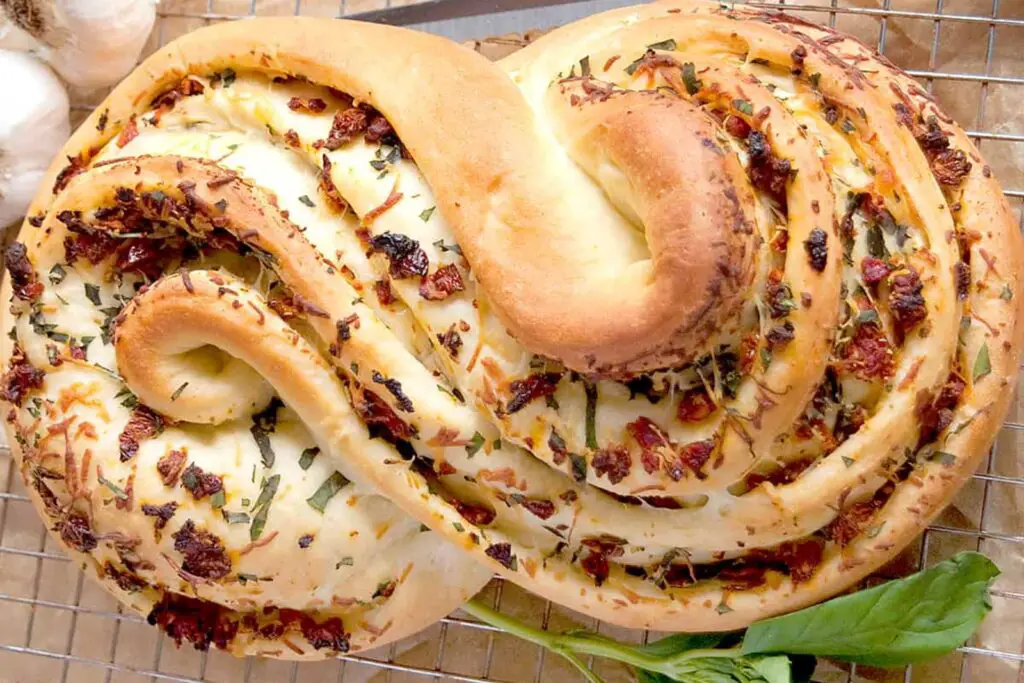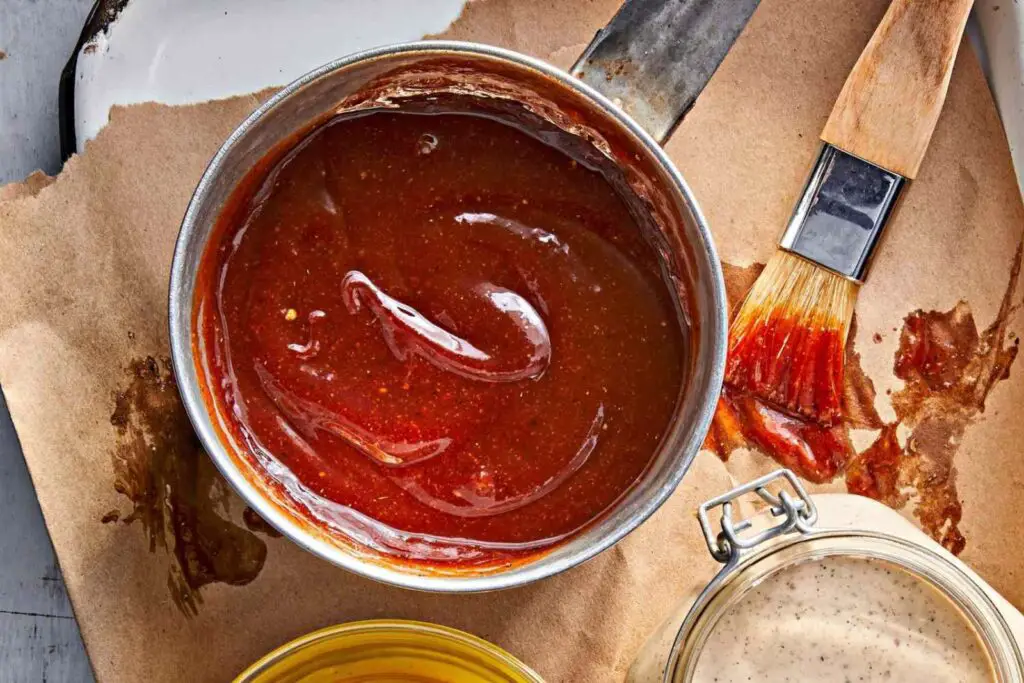
Bread rolls, where the soft and pillowy texture meets the irresistible aroma of freshly baked goodness. Bread rolls, also known as dinner rolls or buns, are a versatile and delightful addition to any meal. Whether you’re enjoying them as a side dish, using them as the base for sliders or sandwiches, or simply indulging in their warm, buttery goodness on their own, bread rolls are a crowd-pleasing treat. However, making a batch of bread rolls can sometimes result in more than you can consume in one sitting. That’s where freezing comes in handy. Freezing bread rolls allows you to extend their shelf life and have a convenient supply of rolls whenever you desire. In this guide, we’ll explore the process of freezing bread rolls, providing you with tips and techniques to ensure that they maintain their freshness, softness, and delicious flavor. So whether you’re preparing for a special gathering, want to have a quick and easy side dish on hand, or simply love the idea of having freshly baked bread rolls readily available, freezing is an excellent way to preserve and enjoy these delectable treats whenever the craving strikes.
Here are the simple steps to freeze bread rolls:
Step 1: Select Fresh Bread Rolls
Choosing fresh bread rolls is an important first step in the process of freezing bread rolls. Freshness plays a crucial role in the final quality of the frozen rolls. Here’s why it’s essential to select fresh bread rolls for freezing:
- Texture preservation: Fresh bread rolls are soft and have a pleasant texture. When frozen, they are more likely to retain their softness and avoid becoming overly dry or crumbly after thawing. Stale or hard rolls may not freeze as well and can result in a less enjoyable eating experience.
- Flavor retention: Fresh bread rolls have a rich aroma and delicious taste. Freezing helps preserve their flavor, but starting with fresh rolls ensures that the desirable taste characteristics are maintained. Stale rolls may have a diminished flavor profile, which can impact the overall enjoyment of the rolls after freezing and thawing.
- Reduced risk of freezer burn: Freezer burn occurs when moisture is lost from the food and it becomes dehydrated. Choosing fresh rolls with optimal moisture content reduces the chances of freezer burn. Stale rolls are more prone to moisture loss, which can result in a less appealing texture and taste.
To select fresh bread rolls, consider the following tips:
- Purchase rolls from a bakery or grocery store known for their fresh bread products.
- Check the expiration or sell-by date on the packaging. Choose rolls with the furthest expiration date to ensure maximum freshness.
- Inspect the rolls for any signs of staleness, such as a hard or dry exterior. Fresh rolls should feel soft to the touch.
- If buying from a bakery, ask the staff about the freshness of the rolls or any recommended storage guidelines.
By starting with fresh bread rolls, you set the foundation for successful freezing and subsequent thawing. The freshness of the rolls contributes to maintaining their texture, flavor, and overall quality, allowing you to enjoy delicious bread rolls even after they have been frozen.
Step 2: Prepare the Rolls for Freezing
After selecting fresh bread rolls, the next step in freezing them is to prepare them properly. This involves separating the rolls if they are connected and considering other options like slicing them to create buns for sandwiches. Here’s why and how to prepare the rolls for freezing:
- Ease of portioning: If the bread rolls are connected, it’s beneficial to separate them before freezing. By doing so, you can easily thaw and use only the number of rolls you need at a time. This prevents unnecessary thawing and refreezing of the entire batch, which can affect the quality of the rolls.
- Convenience for future use: Slicing the bread rolls horizontally to create buns for sandwiches can be a time-saving and convenient option. When you’re ready to use them, you’ll have pre-sliced buns that are ready to be filled with your favorite ingredients. This can be particularly helpful if you frequently make sandwiches or burgers using bread rolls.
To prepare the bread rolls for freezing, follow these steps:
- If the bread rolls are connected, carefully separate them from each other. Gently twist or cut along the seams to separate them into individual rolls. Be cautious not to crush or deform the rolls in the process.
- If you prefer to have pre-sliced buns, use a sharp knife to slice the rolls horizontally. Aim for even slices to ensure consistent sizes for your sandwiches or burgers.
- If you decide not to slice the rolls, you can freeze them as whole rolls without separating them.
- Place the separated or sliced rolls on a clean tray or baking sheet, leaving a small gap between each roll. This prevents them from sticking together during freezing.
By preparing the rolls in this manner, you ensure that they are conveniently portioned and ready to use when needed. Separating the rolls allows for easier thawing of only the required quantity, while slicing them creates pre-portioned buns for sandwiches. Whether you choose to separate or slice the rolls, these preparations enhance the convenience and versatility of the frozen bread rolls.
Step 3: Wrap the Bread Rolls
After preparing the bread rolls for freezing, the next crucial step is to wrap them individually. Wrapping the rolls properly helps protect them from freezer burn and moisture loss, ensuring that they maintain their quality and freshness during storage. Here’s why and how to wrap the bread rolls for freezing:
- Protection against freezer burn: Freezer burn occurs when food is exposed to air inside the freezer, leading to moisture loss and the formation of ice crystals. Proper wrapping creates a barrier that helps prevent air from reaching the bread rolls, reducing the risk of freezer burn. This ensures that the rolls retain their texture and flavor when thawed.
- Moisture retention: Bread rolls contain moisture, which contributes to their softness and freshness. By tightly wrapping each roll, you help retain the moisture within the rolls during freezing. This prevents them from drying out and becoming stale when thawed.
To wrap the bread rolls for freezing, follow these steps:
- Prepare individual pieces of plastic wrap or aluminum foil large enough to fully enclose each roll.
- Place a bread roll in the center of the plastic wrap or aluminum foil.
- Bring the sides of the wrap or foil up and over the roll, covering it completely. Make sure to seal the edges tightly to prevent air from entering.
- Twist or fold the ends of the wrap or foil to secure it further. This ensures that the rolls are well-sealed and protected during freezing.
- Repeat the process for each bread roll, wrapping them individually.
- If using aluminum foil, you can label the wrapped rolls by writing the date or any additional information directly on the foil.
By wrapping each bread roll individually with plastic wrap or aluminum foil, you create a protective barrier that shields the rolls from freezer burn and helps maintain their moisture content. This ensures that the rolls remain fresh and delicious when you’re ready to thaw and enjoy them. Proper wrapping is a crucial step in the freezing process to preserve the quality of the bread rolls.
Step 4: Place in a Freezer-Safe Container
After individually wrapping the bread rolls, it’s important to store them properly in a freezer-safe container. Placing them in a suitable container or resealable plastic bag offers additional protection and organization. This step helps prevent freezer burn and keeps the rolls fresh during their time in the freezer. Here’s why and how to place the wrapped rolls in a freezer-safe container:
- Protection against freezer burn: Freezer burn occurs when food is exposed to air inside the freezer, leading to moisture loss and degradation in quality. Placing the individually wrapped rolls in a freezer-safe container provides an extra layer of protection, reducing the chances of air exposure and freezer burn.
- Efficient use of freezer space: Using a container or bag allows for compact storage of the bread rolls, making the most of the available freezer space. It also helps keep the rolls organized, preventing them from getting scattered or crushed by other items in the freezer.
To place the wrapped bread rolls in a freezer-safe container, follow these steps:
- Select a container or resealable plastic bag specifically designed for freezer use. Ensure it is clean and dry.
- Place the individually wrapped bread rolls inside the container or bag. Arrange them in a single layer, leaving some space between each roll to prevent sticking together.
- If using a container with a lid, make sure it fits securely to create a tight seal. If using a bag, press out as much air as possible before sealing it tightly. This helps minimize air exposure and the potential for freezer burn.
- If you have multiple layers of rolls, you can separate them with parchment paper or plastic wrap to avoid sticking.
- If desired, you can also label the container or bag with the date of freezing for easy reference later.
By placing the individually wrapped bread rolls in a freezer-safe container, you provide an added layer of protection against freezer burn and maintain organization within the freezer. This ensures that the rolls stay fresh and preserve their quality until you’re ready to thaw and enjoy them. Proper storage in a suitable container contributes to the overall success of freezing bread rolls.
Step 5: Label and Date
Labeling and dating the container or bag in which the bread rolls are stored is an important step in freezer organization. By providing clear information about the date of freezing, you can keep track of how long the rolls have been in the freezer. This allows you to prioritize the use of the rolls based on their freshness and ensures you consume them within their recommended storage time. Here’s why and how to label and date the container:
- Freshness tracking: Bread rolls, like any other food item, have a recommended storage time in the freezer. By labeling and dating the container, you can easily determine when the rolls were frozen. This helps you prioritize consuming the oldest rolls first, ensuring that you utilize them while they are still at their best quality.
- Avoiding food waste: Properly labeling and dating the container helps prevent food waste. It allows you to keep track of the duration the bread rolls have been in the freezer and reminds you to consume them before they exceed their recommended storage time. This way, you can enjoy the rolls while they are still fresh and flavorful.
To label and date the container or bag, follow these steps:
- Use a waterproof marker or adhesive labels specifically designed for freezer use.
- Write the date of freezing clearly on the container or bag. Include the day, month, and year.
- Place the label in a visible area on the container or bag for easy reference.
- If you have multiple containers or bags with different batches of bread rolls, ensure each one is labeled with the respective date.
By labeling and dating the container or bag, you establish a system that helps you keep track of the storage time of the bread rolls. This ensures that you consume them within their recommended freshness period, minimizing food waste and maximizing your enjoyment of the rolls. It’s a simple yet effective practice that contributes to maintaining an organized freezer and optimizing your frozen bread roll experience.
Step 6: Freeze the Bread Rolls
Once the bread rolls are properly wrapped, placed in a freezer-safe container, and labeled, it’s time to freeze them. Freezing the rolls promptly and ensuring their proper placement in the freezer helps maintain their quality and prevents damage during storage. Here’s why and how to freeze the bread rolls:
- Temperature preservation: Freezing the bread rolls at a sufficiently low temperature halts the growth of microorganisms and preserves their freshness. This maintains the texture, flavor, and overall quality of the rolls until they are thawed and consumed.
- Protection from physical damage: Placing the container or bag of bread rolls in a safe location within the freezer is important to avoid crushing or squeezing them. Proper placement ensures that the rolls maintain their shape and texture, preventing them from becoming misshapen or flattened.
To freeze the bread rolls effectively, follow these steps:
- Once the rolls are wrapped, sealed in a freezer-safe container, and labeled, place the container or bag in the freezer.
- Choose a location in the freezer where the rolls won’t be at risk of being crushed or damaged by other items. Consider placing them on a flat surface or in a designated compartment, if available.
- Avoid stacking heavy items on top of the container or bag to prevent squishing the rolls.
- Make sure the freezer is set to an appropriate temperature, typically around 0°F (-18°C), to ensure proper freezing.
- Keep the rolls in the freezer for the recommended storage time based on the type of bread and freezer guidelines. Refer to the packaging or recipe instructions, if available, for specific recommendations.
By promptly placing the container or bag of bread rolls in the freezer and ensuring their safe location, you preserve their quality and protect them from physical damage. Proper freezing allows the rolls to maintain their texture, flavor, and overall appeal until you’re ready to thaw and enjoy them. Following these steps ensures that your frozen bread rolls will be in optimal condition when you decide to use them.
How long can bread rolls last in the freezer?
Bread rolls can last in the freezer for up to 3 months without a significant loss in quality. However, for optimal taste and texture, it is recommended to consume them within the first 1 to 2 months. Proper packaging, such as individually wrapping the rolls and placing them in a freezer-safe container, helps maintain their freshness during storage.
Step 7: Thaw the Bread Rolls
When the time comes to enjoy the frozen bread rolls, it’s important to thaw them properly to preserve their texture and flavor. There are a few methods you can use to thaw the bread rolls, depending on your preference and time available. Here’s why and how to thaw the bread rolls:
- Texture preservation: Thawing the bread rolls properly helps maintain their softness and texture. Improper thawing methods, such as microwaving or direct heat, can result in uneven heating and a loss of moisture, leading to a less desirable texture.
- Flavor restoration: Thawing the bread rolls correctly allows their flavors to fully develop and restore their freshness. Gentle thawing methods help retain the delicate flavors and prevent them from becoming dry or stale.
To thaw the bread rolls, follow these methods:
Room temperature thawing:
- Remove the desired number of bread rolls from the freezer and place them on a clean countertop or plate.
- Let the rolls thaw at room temperature for several hours or until they become soft and pliable.
- Once fully thawed, the rolls are ready to be enjoyed.
Oven or toaster oven reheating:
- Preheat your oven or toaster oven to a low temperature, around 300°F (150°C).
- Remove the desired number of bread rolls from the freezer and unwrap them.
- Place the rolls directly on the oven rack or a baking sheet lined with parchment paper.
- Heat the rolls in the preheated oven for a few minutes, typically 5 to 10 minutes, until they are warmed through.
- Keep a close eye on the rolls while reheating to avoid overcooking or burning them.
- Once heated, remove the rolls from the oven and let them cool slightly before enjoying.
By thawing the bread rolls properly, either at room temperature or through gentle reheating, you ensure that they retain their softness, texture, and flavors. Choose the method that suits your preference and time available to enjoy the bread rolls at their best.
Other related questions
Can you refreeze bread rolls?
Yes, bread rolls can be refrozen, but it may affect their quality. Each time bread rolls are frozen and thawed, there is a risk of moisture loss and changes in texture. It is best to thaw only the desired amount of rolls needed and avoid repeated cycles of freezing and thawing to maintain the best possible quality.
How do I know if the bread rolls have gone bad after being frozen?
After being frozen, bread rolls may exhibit signs of spoilage if they have gone bad. Look for indicators such as mold growth, an off-putting odor, or a significant change in texture, such as excessive dryness or sogginess. Additionally, if the rolls have been stored for an extended period beyond their recommended freezer storage time, they may lose their quality and taste stale.
Can I freeze bread rolls with different flavors or fillings?
Yes, it is possible to freeze bread rolls with different flavors or fillings. However, the success of freezing rolls with fillings depends on the nature of the filling. Fillings that are prone to excessive moisture or texture changes may not freeze well. It is recommended to individually wrap the filled bread rolls and ensure they are securely sealed to prevent freezer burn and maintain their quality during freezing.
Can you toast bread rolls from frozen?
Yes, it is possible to toast bread rolls directly from frozen. Pre-sliced bread rolls or buns can be placed in a toaster or toaster oven and toasted on a low to medium setting for a slightly longer time than fresh rolls. Toasting from frozen may result in a slightly longer cooking time, but it allows for convenient and quick preparation of warm and crispy bread rolls without the need for prior thawing.








